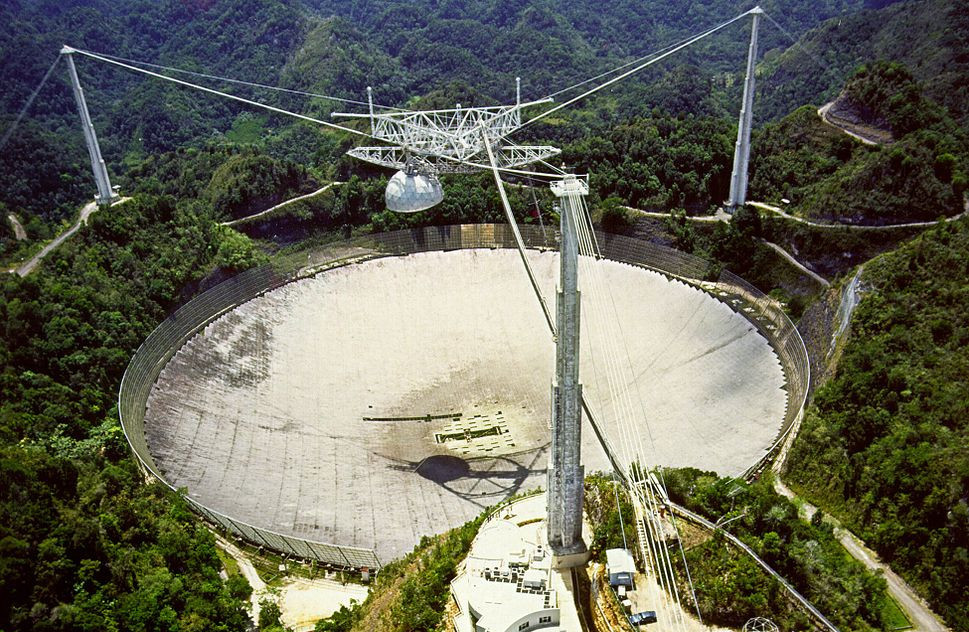Arecibo Observatory Confirmed the Existence of a New Type of Super-Powerful Radiation Source in the Universe

The Arecibo Observatory Radio Telescope is the largest single aperture in the world. The diameter of its reflector, located in a natural karst funnel, is 304.8 meters. In April of this year, laboratory staff published observations that confirm the existence of such a phenomenon as short radio bursts (Fast Radio Burst or FRB). For the first time, such an outbreak was recorded in 2007 by the radio telescope of the Parks Observatory in Australia. Over the following years, several more outbreaks were detected, but they were all recorded by the same radio telescope. Now the existence of FRB has received independent confirmation.
The interest of astronomers in short radio flashes is caused by the fact that they come from very large distances - of the order of billions of light years, which indicates their enormous brightness. The power of such a flash, lasting only about a millisecond, is comparable to the gamma-ray bursts that accompany supernova explosions and the birth of black holes. Astronomers suggest that the source of such flares is a previously unknown kind of space objects - blitz . Therefore, confirmation of their existence is of great importance, comparable to the discovery of pulsars in 1967.
Blitzar is a supermassive neutron star whose mass exceeds the Oppenheimer-Volkov limit. A huge rotation speed saves a star from immediate collapse into a black hole - centrifugal forces prevent the substance of the star from falling beyond the event horizon.
Blitzar has a very strong magnetic field, which, rotating with the star, "cleans" the surrounding space from matter and at the same time slows down the rotation of the star. Sooner or later, centrifugal forces are reduced so much that the star turns into a black hole. At the same time, there is no gamma-ray burst, since, according to modern concepts, it requires that an accretion disk surround the collapsing star- but all the matter around the blitz is already swept out by a magnetic field. At the moment of collapse, the star itself - the source of the magnetic field - is beyond the event horizon and can no longer interact with this magnetic field. As a result, the magnetic field, as it were, “breaks away” from the star and generates a short, but very powerful flash in the radio range.
Studying short radio flashes can shed new light on the process of black hole formation, in addition, radio waves flying billions of light years are distorted and interact with the intergalactic environment, which can also provide new information about the structure of the Universe.
